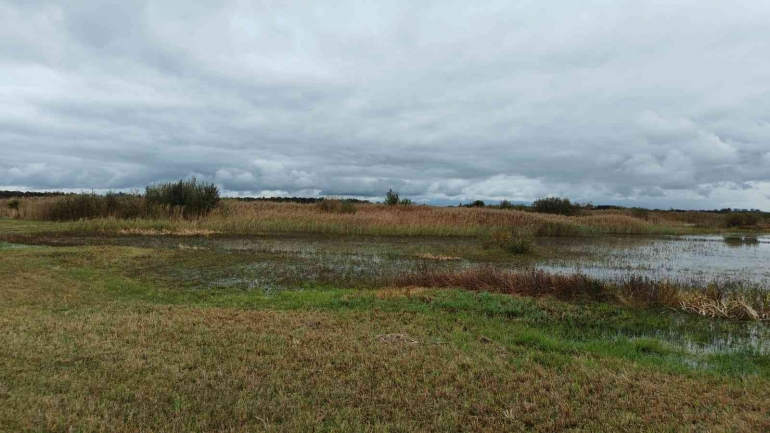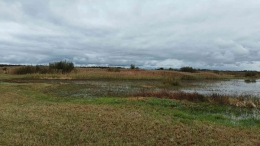Yus Rusila Noor
Yus.noor@gmail.com
It was a morning veiled in mist when we entered the western peat meadow landscape, that quietly living horizon stretching across the Dutch countryside, where the sky seems impossibly wide, and water becomes both memory and destiny. In this vast, low-lying land, the air itself feels like a negotiation between soil and sky. Beneath our feet lay peat, centuries of accumulated life, now slowly releasing carbon into the atmosphere. Around us, cows grazed on damp meadows, canals traced delicate veins of water, and distant windmills stood as sentinels of a long conversation between humans and wetlands.
The Netherlands has always been a country built upon the art of coexistence, between water and land, between human ambition and ecological constraint. Yet, even in this land of mastery over water, the western peat meadows (veengebieden) tell a story of limits: subsidence caused by drainage for agriculture, biodiversity loss, and the invisible crisis of carbon emissions from drying peat. What once sustained Dutch prosperity now challenges it.
The living laboratory of a landscape
Our visit to this region was more than a field trip, it was an invitation to see landscape as a living system, not a patchwork of ownerships and functions. The Western Peat Meadow Landscape stretches across the provinces of Utrecht, Zuid-Holland, and North-Holland, a mosaic of pastures, ditches, villages, and heritage farms. It is also a complex governance arena where farmers, conservationists, and water boards must continuously negotiate coexistence.
Here, initiatives such as Commonland, Wij.land, and Natuurmonumenten have become laboratories for the "4 Returns Approach", a regenerative framework that seeks to restore four fundamental outcomes: inspiration, social capital, natural capital, and financial return (Commonland, 2021). It is a deceptively simple yet deeply systemic idea, that real restoration must heal landscapes, communities, and economies at once.
Walking through the meadows with local practitioners, one senses that restoration is not an act of reversing time, but of reimagining it. Ditches are being re-wetted to slow oxidation; farmers experiment with paludiculture, cultivating wet-loving crops such as cattails and reed; while cooperatives explore new business models based on carbon credits and ecosystem services. Beneath the pragmatic tone of Dutch planning lies a quiet, moral experiment, can a landscape once engineered for drainage now be re-engineered for resilience?
Between water and will








